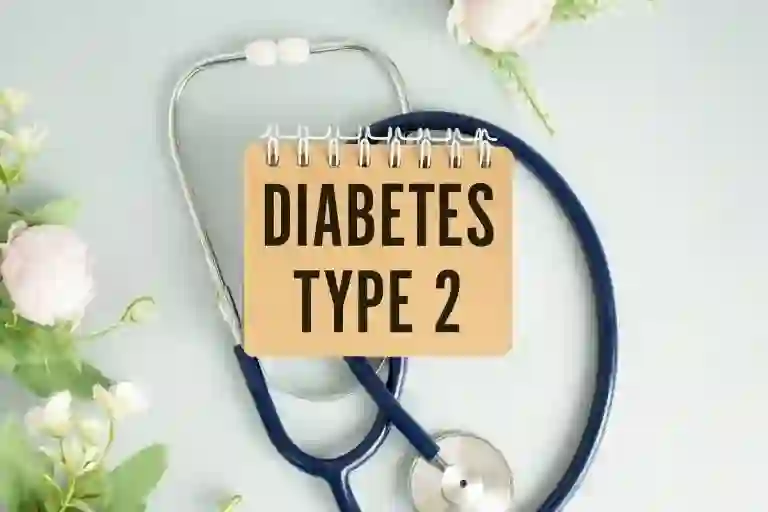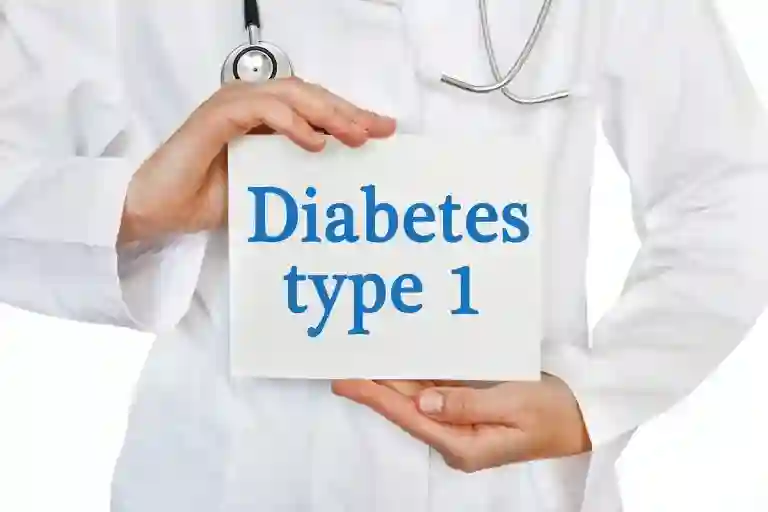Diabetes: Signs, Symptoms, and Causes Explained

Glucose is an essential component of the energy system of the human body. Most of our food is broken down into sugar, which our body then releases into our bloodstream. When the blood glucose level increases, insulin is released by the pancreas. This insulin helps direct the flow of blood sugar into the cells, where it is metabolized and used as energy. Diabetes is a chronic (slowly progressing) condition that affects our body’s ability to properly process blood glucose. It is a medical condition characterized by a deficiency of insulin in the body or an inability of the body to effectively utilize insulin. When there is insufficient insulin production or cells cease to respond to insulin, an excessive amount of blood sugar remains in the bloodstream. Over time, it can lead to serious health complications, such as heart problems, vision loss, and kidney disease. The main symptoms and causes of diabetes vary by type. Types of diabetes that are chronic include type 1 and type 2 diabetes, as well as potentially reversible diabetes conditions such as prediabetes or gestational diabetes. Let’s start by learning the types of diabetes. What are the Different Types of Diabetes? Type-1 Diabetes Type-1 diabetes is a condition in which the body does not produce enough or any amount of insulin. This is due to the immune system’s ability to attack and destroy the cells within the pancreas responsible for producing insulin. Generally, type 1 diabetes is diagnosed in children and adolescents, although it can occur at any age. Individuals with type-1 diabetes must take insulin daily in order to survive. Type-2 Diabetes Type-2 diabetes is a condition in which the body’s cells do not utilize insulin effectively. While the pancreas is responsible for producing insulin, it may not be producing enough of it to maintain the blood glucose in a healthy range. This is the most prevalent form of diabetes. People with type-2 diabetes are at an increased risk of developing it if they are overweight or obese or if they have a familial history of the condition. This condition can develop at any stage of life, including childhood. Gestational Diabetes This diabetes is a type of diabetes that is typically diagnosed during pregnancy. The majority of gestational diabetes resolves after the birth of the baby. However, gestational diabetes increases the risk of type 2 diabetes. Prediabetes Prediabetes is a medical condition in which the level of glucose in the blood is higher than normal and not high enough for a diagnosis of type 2 diabetes. People with this type of diabetes are more likely to develop type-2 diabetes later in life. Signs & Symptoms of Diabetes Diabetes symptoms are determined by blood sugar levels. Certain people, particularly those with pre-existing conditions, such as gestational diabetes, and those with type 2 diabetes, may not experience any symptoms at all. On the other hand, those with type 1 diabetes experience more pronounced and immediate diabetes symptoms. General signs and symptoms of diabetes mellitus include: Additional details about sugar symptoms per type of diabetes include: Type 1 Diabetes – T1 diabetes symptoms can develop over a short period of time, such as a few weeks to a few months. You may also experience other sugar symptoms that are a sign of a serious complication known as Diabetes-related Ketoacidosis (DKA). Symptoms of DKA include: Type 2 Diabetes and Pre-diabetes – Signs and Symptoms of Diabetes Mellitus Type 2 may not be there in the person, or they may not be aware of them because they come on gradually. Regular blood tests may indicate a high blood glucose level before any symptoms get noticed. Another indication of pre-diabetes is discoloration of the skin on certain areas of the body. Gestational Diabetes – Gestational diabetes is generally undetectable during pregnancy. A gestational diabetes test will typically be administered to the patient between the 24th and 28th week of gestation. Some of the symptoms can be classified for the different genders, which we have discussed below. Symptoms in Men Men with diabetes may experience more than the typical signs of the condition, such as: Symptoms in Women Symptoms of diabetes in women include: What Causes Diabetes? Diabetes is usually caused by excessive levels of glucose in the blood. However, the causes of diabetes mellitus vary by type: Type-1 Diabetes – The exact cause of type 1 diabetes is unknown to medical professionals. It is thought to be caused by an immune system malfunction that mistakenly attacks and destroys the beta cells that are responsible for producing insulin in the body’s pancreas. It is possible that certain genes may be involved in the development of type 1 diabetes or that a virus may trigger an immune system response. Type-2 Diabetes – Diabetes mellitus, also known as type-2 diabetes, is a condition that is caused by both genetic and environmental factors. The risk of type-2 diabetes is increased by being overweight or obese. The extra weight, particularly in the abdomen, makes the body’s cells more sensitive to insulin’s effects on blood sugar levels. Type 2 diabetes runs in families. People with certain genes are more likely to develop type 2 diabetes and are also more likely to be overweight. Certain medications like corticosteroids (including those used to treat HIV/AIDS) may cause Type 2 diabetes over a long period of time. Gestational Diabetes – This type of diabetes can be caused by hormonal changes during pregnancy. During pregnancy, the placenta releases hormones that make the cells in the pregnant woman’s body less sensitive to insulin. As a result, the woman’s blood sugar levels can become dangerously high. If you are overweight when you become pregnant, or if you gain a lot of weight during pregnancy, you’re more likely to have gestational diabetes. What Else are the Causes of Diabetes? Genetic Mutations – Monogenic diabetes is a condition in which alterations in a single gene cause a decrease in the ability of the pancreas to produce insulin. These alterations are typically transmitted through the
10 Foods to Avoid with Diabetes

Making the right food choices is crucial for people with diabetes. Diabetes surgery is often considered because diabetes can interfere with a person’s ability to process blood sugar (glucose). Eating unhealthy food while being diabetic can have a number of effects on the body, including high blood sugar levels and weight gain. Different foods provide various amounts of macronutrients that give us energy. Having a healthy mix of these foods can help manage symptoms of diabetes as well as blood sugar levels. Here are a Few Foods to Avoid with Diabetes 1. Refined Carbohydrates Carbohydrates can be found in three forms in food: starch, sugar, and fiber. Starch and sugar are two of the biggest problems for diabetic patients as these components in foods are broken down into glucose, which raises blood glucose levels. Starchy foods to avoid: Diabetic patients may benefit from limiting the consumption of white rice and white flour as well as food products made with white flour, including white bread, white pasta, cereals, biscuits, and baked foods. Sugary foods to avoid: Sugary foods have little to no nutritional value but cause a spike in blood glucose level and also contributes to weight gain while increasing the likelihood of heart stroke. Foods high in sugar content include baked foods such as cakes and cookies, candies and chocolates, sweets, syrups, and most carbonated beverages. Eat instead: 2. Processed Meats Processed meats such as ham, bacon, and salami contain many harmful chemicals that are not eaten in the fresh state. They are linked to a high risk of cancer and heart disease. Diabetic patients should avoid or limit the intake of processed meats, fatty cuts of meats, and deep-fried fish. Eat instead: Skinless chicken, whole eggs, and fish can be eaten by those who have a non-vegetarian diet. Vegetarian options for diabetic patients may include beans, lentils, nuts, and soy products. 3. Processed Sugars Most packaged confectionery, such as cakes, pastries, and cookies, are high in refined sugar, refined wheat, and unhealthy fats. They are also high in preservatives and artificial sweeteners, which cause a spike in blood sugar and insulin levels. Avoiding such foods can be beneficial for diabetic patients. Eat instead: Such snacks and confectionery can be hard to resist, but replacing them with vegetables, nuts, and fresh fruits can be better and healthier choices for diabetic patients. 4. Deep Fried Foods Foods deep fried in oils are loaded with unhealthy saturated fats, which are very high in fat and calories, thus increasing the risk of developing heart diseases and obesity. Most deep-fried foods are fast foods which are high in sodium content and can contribute to an increase in blood pressure levels. Eat instead: Fried vegetables and baked sweet potatoes can be consumed by diabetic patients. 5. Full-Fat Dairy Products Full-fat dairy mainly contains saturated fats, which increases the risk of heart disease as well as becoming obese. Diabetic patients may benefit from avoiding full-fat dairy products, including cheeses and butter. Ear instead: Low-fat or non-fat dairy product alternatives may be available, which can be consumed by diabetic patients. 6. Processed or Canned Vegetables Vegetables have a lot of fiber; thus, these are the healthiest form of carbs. However, not all forms of vegetables are good for diabetic patients. Canned vegetables, pickles with added salt (sodium), and vegetables cooked in butter or cheese are foods to be avoided for diabetic patients. Eat instead: Fresh vegetables can be eaten raw, grilled, or roasted. Green leafy vegetables and unsalted, low-sodium vegetables can be beneficial for diabetic patients. 7. Dry Fruits Dry fruits have great nutritional value and are loaded with fibers. Unfortunately, dry fruits are loaded with sugar, which may not be as beneficial for diabetic patients. Eat instead: Fresh fruits such as apples and bananas can be beneficial for diabetic patients. 8. Beverages Most beverages and juices contain high carbohydrates and added sugars. Even alcoholic drinks can contain sugar and carbs. Such drinks and fluids should be avoided by diabetic patients. Diabetic patients should also avoid flavored or sweetened teas, coffees, and chocolate drinks, coffee with cream, and regular sodas. Drink instead: Apart from plain water, unsweetened tea, coffee, and zero-calorie drinks can be consumed by diabetic patients. A few pieces of fruit, such as cucumbers and apples, can be added to give some flavor to the water. 9. Breakfast Cereals Most breakfast cereals contain high amounts of processed sugar, which can prove to be harmful for patients with diabetes as it will spike a patient’s blood sugar and insulin levels. Excessive consumption of such sugary cereals can even lead to obesity while also increasing the risk of heart disease and cancer. Eat instead: Sweetened breakfast cereals should be replaced with healthier alternatives such as oatmeal, homemade granola, idlis, poha, whole wheat pancakes, etc. 10. Unhealthy Saturated or Trans Fats While unsaturated fats may be beneficial in reducing the risk of heart diseases and lower the levels of trans fats, cholesterol, and saturated fats have no health benefits. They also increase bad cholesterol levels in the body and are most commonly found in fast foods and snacks such as fried chips, pizzas, cakes, pies, cookies, doughnuts, etc. Eat instead: Natural sources of fats should be consumed instead of saturated fats such as vegetable fats, including nuts and seeds. Foods containing omega-3 fatty acids found in fish are also beneficial for diabetic patients. The key to eating healthy is to choose mindfully. People with diabetes should be mindful of the glycemic index (GI) of the foods they consume. Even seemingly healthy foods can have high sugar content, such as watermelons. Additionally, it is important to focus on healthy macronutrients and avoid foods that are high in sugar, sodium, and fat. To make more informed choices about food and diet, people with diabetes may consult board-certified dietitians and diabetologists at Wockhardt Hospitals. Our world-class medical professionals will help them understand what to eat when to eat, and how much to eat. Managing weight and reducing the potential risk
Type 2 Diabetes: Symptoms, Causes & Treatment

What is Type 2 Diabetes? Type 2 Diabetes is a long-term medical condition in which the body is unable to effectively utilize insulin. A high level of glucose circulates in the bloodstream, ultimately affecting the circulatory, nervous, and immune systems. This medical condition is most common in middle-aged and elderly individuals and was formerly referred to as Adult-onset Diabetes or Diabetes Mellitus. The prevalence of childhood obesity, however, makes type 2 diabetes also a threat to children and adolescents. Several approaches are available for managing this disease, including lifestyle changes, medications, and regulated insulin administration, as well as regular visits to the concerned doctor. Type 2 Diabetes Symptoms Type 2 diabetes is a chronic (slow-progressing) medical condition. Type 2 diabetes symptoms can be so subtle that one may not even be aware of them. Some of the most common type 2 diabetes symptoms and signs include: If an individual has dark spots on their neck or under the arms, it’s a good idea to go to the doctor. These dark spots are known as acanthosis nigricans, and they can be a sign that the body is becoming more resistant to insulin. Causes of Type 2 Diabetes Type 2 diabetes is usually the result of a combination of factors. The causes of type 2 diabetes include: Risk Factors of Type 2 Diabetes The risk of having type 2 diabetes may be increased due to a variety of factors, including: Diagnosis Procedure for Type 2 Diabetes Diabetes mellitus can be diagnosed through blood tests conducted by a physician. These tests may include: Treatment for Type 2 Diabetes Type 2 diabetes treatment involves a combination of lifestyle modifications and medications. Lifestyle Changes Medication In addition to diet and exercise, some people take medication to control diabetes. Your healthcare provider may prescribe oral diabetes medications. One can also use insulin to help their body use sugar more effectively. Combination therapy is when a patient takes multiple medications to manage type two diabetes. The patient and physician should work together to determine the best combination for the patient. Surgery for Type 2 Diabetes If you have type-2 diabetes, weight loss surgery can be a great way to help you lose weight. This type of surgery limits how much food you can eat or how much nutrients your body can absorb. There are different weight loss surgeries available, so it’s important to talk to your doctor about which one is right for you. How to Prevent Type 2 Diabetes? It is possible to reduce the risk of developing type 2 diabetes by adhering to a healthy lifestyle. It includes maintaining a healthy diet and exercising regularly: Living with Type 2 Diabetes Diabetes Mellitus type 2 is a chronic medical condition that requires long-term management. Diabetes management is a pretty complex process requiring an individual to completely understand “what is type two diabetes?”, adopt appropriate lifestyle habits, monitor blood sugar levels on a regular basis, and attend regular medical appointments and treatments. However, the efforts made can have a significant impact on overall health & quality of life. Untreated Type-2 diabetes can cause a variety of life-threatening conditions. At Wockhardt Hospitals, a dedicated team of specialists works together to provide the best care possible to help turn your diabetes around and get on the path to remission. These specialists will provide highly personalized care and treatment to patients, assist them in managing their condition over a period of time, and advise them on how to prevent the re-occurrence of type 2 diabetes and protect their future health. FAQs on Type 2 Diabetes Q. Who is at risk for type 2 diabetes? Type 2 diabetes is more common in those who have a sedentary lifestyle, have poor eating habits, or have a family history of the disease. The condition’s risk is also influenced by age, ethnic origin, and obesity. Maintaining a healthy weight and engaging in regular exercise can help lower the risk of type 2 diabetes. Q. What is the main cause of type 2 diabetes? Insulin resistance, or cells’ inability to respond to insulin as it is needed, is the main cause of type 2 diabetes. A combination of lifestyle factors, including obesity and physical inactivity, together with a hereditary susceptibility, generally causes this. Its growth may also be influenced by a poor diet heavy in carbs and processed sugars. Q. What is a good diet for type 2 diabetes? A balanced diet for individuals with type 2 diabetes includes lean proteins, whole grains, healthy fats, and plenty of vegetables. It’s advisable to minimize the intake of refined carbs, sugary meals and drinks, and saturated fats. Monitoring carbohydrate intake and choosing low glycemic index foods will help in controlling blood sugar levels. Q. Can type 2 diabetes go away? While there is no known cure for type 2 diabetes, individuals with the disease may experience partial or total remission of their glucose levels, bringing them back to the normal range. Significant weight loss is the primary way individuals with type 2 diabetes achieve remission. Your diet is another factor that can have a significant impact on your ability to control or even reverse type 2 diabetes. Increasing your physical activity level is also an effective method to combat the consequences of type 2 diabetes and prediabetes, as well as to reduce weight. Q. Can type 2 diabetes live a normal life? If people with diabetes achieve their treatment goals and receive the right care, they can live longer. This encompasses aspects, such as nutrition, exercise, medication, and regular blood sugar testing. Life expectancy can be extended by three or, in certain cases, ten years. Many individuals with type 2 diabetes can successfully manage their medical condition and lead happy, rewarding lives by maintaining good behaviors and closely collaborating with their doctors.
Type 3 Diabetes: Symptoms, Causes & Treatment

Type-3 diabetes is the term used to describe Alzheimer’s disease due to its association with insulin dysregulation in the brain. This leads to the condition of dementia. However, this terminology has not been officially accepted in the medical fraternity. Another type of diabetes mellitus condition has been classified and is termed “type 3c” diabetes, alternatively called pancreatogenic diabetes. This is a diabetic condition in which the exocrine pancreas glands are damaged and starts damaging the endocrine pancreatic glands, where the beta-islets are situated and produce insulin. There are certain conditions that can lead to type 3 diabetes, which may include chronic pancreatitis, cystic fibrosis, pancreatic cancer, etc. Causes of Type 3 Diabetes In a 2022 review of research, it was found that people with type-2 diabetes are more at risk of developing Alzheimer’s disease or another type of dementia, with a 45% to a whopping 90% chance of incidence. It has also been found that females with type-2 diabetes are more vulnerable to developing vascular dementia than males. It is worth noting that Alzheimer’s disease has been described as a neuroendocrine disease that involves the signaling of impaired insulin and Insulin-like Growth Factors (IGFs). This leads to inflammation and oxidative stress, which are characteristics of Alzheimer’s disease. Risk Factors Associated with Type 3 Diabetes From many years of research in this aspect, several potential risk factors have been identified to be associated with type three diabetes. These risk factors may include the following: Apart from these factors, a particular gene– APOE4, has been identified to be associated with increasing the likelihood of developing Alzheimer’s disease. Type 3 Diabetes Symptoms For the diagnosis of the proposed type-3 diabetes, symptoms associated with Alzheimer’s, such as dementia, have been included. The early signs & symptoms of Alzheimer’s disease include the following: It is important to note that some of the above-mentioned symptoms, such as memory changes, can be a normal part of aging. However, if there are additional symptoms as above that have progressively worsened over time, professional assessment may help to understand if it is Alzheimer’s and ways of managing it. Diagnosis of Type 3 Diabetes Diabetes Mellitus Type 3 does not have any definitive diagnostic test as it has not been officially recognized. Diagnosis of Alzheimer’s can be made based on a neurological examination and neurophysiological testing. When visiting a healthcare professional, they may ask about the family history and the symptoms along with the patient’s medical history. Imaging tests may also be recommended to be performed, which may include: Additionally, tests of cerebrospinal fluid may also be performed to look for indicators of Alzheimer’s. In case the patient has symptoms of type-2 diabetes and Alzheimer’s but has not yet been diagnosed, they may be recommended to get a blood sugar test and hemoglobin A1c test done. If the patient has diabetes, as confirmed from previous or recent tests, it is important to start treatment as soon as possible. This is necessary so as to avoid further damage to the body, including the brain, which may indirectly be beneficial to slow down the progression of Alzheimer’s or dementia. How Type 3 Diabetes and Alzheimer’s Disease are Related Doctors may not use “type 3 diabetes” as a diagnostic term for Alzheimer’s or any similarly related condition. However, Alzheimer’s can be diagnosed based on the known parameters after performing mental, physical, and psychological evaluations. Although scientists are actively researching the possible link between Alzheimer’s and diabetes, some researchers have examined a possible link between Alzheimer’s disease and diabetes in the sense that Alzheimer’s is triggered by the condition of insulin resistance in the body. While this is still inconclusive evidence, untreated diabetes is considered to be a risk factor for vascular dementia since those with unregulated high blood sugar may have inflammation, which may damage brain cells. Vascular dementia may be considered as a warning sign of what can progress to become Alzheimer’s disease. Type 3 Diabetes Treatment Type-3 diabetes treatment is not definite as there may not be an official diagnosis. However, there are separate treatment options available for those who have symptoms or have been diagnosed to have: Medications Based on the diagnosis, doctors may be able to understand how far along Alzheimer’s has progressed. Prescription medications may help to treat cognitive symptoms of dementia and Alzheimer’s. Sometimes, some people may require antipsychotic therapy when the disease progresses and worsens. Management Since there is no sure-shot cure, the doctors may aim to manage the symptoms of Alzheimer’s along with that of type-2 diabetes, if any have been diagnosed. A doctor may recommend certain lifestyle changes to manage type 3 diabetes, which may include the following: Changing Disease Progression While Alzheimer’s may not be cured, it can be managed, or its progression can be slowed down. Anti-myeloid antibody drugs may be beneficial in reducing cognitive & functional decline in patients having early-stage Alzheimer’s disease. Preventing Type 3 Diabetes Although there is no conclusive evidence to prevent Alzheimer’s disease, certain factors may help to delay Alzheimer’s disease, such as: A patient with type-2 diabetes should manage the symptoms of diabetes to help slow down the progression of Alzheimer’s. Regular activity and weight management may help to prevent insulin resistance and a prediabetes condition. Although there has been no proven method that works to prevent Alzheimer’s, managing blood glucose levels may be a sensible approach to begin with preventing the progression of Alzheimer’s as well as prediabetes or type-2 diabetes. Wockhardt Hospitals is a multi-specialty hospital with advanced, state-of-the-art facilities and services, steadily gaining traction and becoming a favorite treatment destination. Our team of specialists, surgeons, consultants, and other medical professionals have extensive experience in treating and managing patients with a wide range of healthcare needs with utmost expertise by following the international standards and guidelines of treatment. We are committed to providing comprehensive patient-centric treatment to cater to every patient with a touch of empathy. To book an appointment with us or for more information and inquiries, contact us directly at 1800221800.
Type 1 Diabetes: Symptoms, Causes & Treatment

What is Type 1 Diabetes? Type 1 Diabetes is a chronic condition of the body in which the pancreas produces and releases little to no insulin, which is a hormone used to allow glucose to enter the cells to synthesize and produce energy for the body. It is sometimes also referred to as “insulin-dependent diabetes.” Previously, it was known as “Juvenile Diabetes” as it was mostly observed in children, but it has been found that it can occur to anyone at any age. Type 1 diabetes is different from and less common than type-2 diabetes, and there are various factors that may cause type 1 diabetes. Moreover, type 1 diabetes also has certain side effects and complications that need to be controlled with self-management and following a doctor-recommended lifestyle. Type 1 Diabetes Symptoms It can take months or even years to start showing the type 1 diabetes symptoms and signs, and it can happen to anyone at any age. Type 1 diabetes can progress within just a few weeks or months. Its symptoms can appear all of a sudden, but once the symptoms have appeared, they can be subtle yet severe. Some of the common signs and symptoms of type 1 diabetes may include: Extreme cases of type 1 diabetes may arise and require immediate medical attention due to type 1 diabetes which may show the following symptoms: Causes of Type 1 Diabetes The exact cause of type 1 diabetes is not known, but it is thought to be an autoimmune response of the body in which the body attacks itself mistakenly. Such an autoimmune response can destroy the pancreatic beta cells responsible for producing the hormone insulin. Insulin is responsible for aiding glucose to be utilized by the cells of the body for producing energy. Destruction of insulin-producing cells can happen for months to even years without observing any prominent symptoms. The occurrence of type 1 diabetes is thought to have certain hereditary connections. It has been observed that certain genes may be passed on to the offspring, which increases their likelihood of developing type 1 diabetes. However, despite having the genes that make them vulnerable to developing type 1 diabetes, they may not develop diabetes at all. Among the other causes of type 1 diabetes, the most prominent one has been attributed to a viral infection in which the attacking virus instructs the body’s immune system to start destroying insulin-producing cells of the pancreas. Type 1 Diabetes Risk Factors There are many risk factors that can increase the likelihood of developing type 1 diabetes. These risk factors may include: Type 1 Diabetes Complications Type 1 diabetes, if left untreated or uncontrolled, can lead to other health problems in such patients. These complications of type 1 diabetes may include the following: Diagnosis of Type 1 Diabetes Experiencing any of the symptoms of type 1 diabetes may be enough to warrant a visit to a healthcare provider. At the doctor’s office, a simple blood test to check the blood sugar levels may be enough to diagnose type 1 diabetes. The blood test may be a fasting blood sugar test, a random sugar test, or a combination of both. A random blood sugar test is performed at any time of the day to confirm previous diagnosis or a fasting blood sugar test. Treatment of Type 1 Diabetes People with type 1 diabetes who are otherwise normal tend to live a healthy life if they manage their blood sugar levels properly. A doctor may recommend certain lifestyle and dietary changes along with insulin adjustment to ensure that the patient’s blood sugar level stays within the normal range. Anyone with type 1 diabetes needs to take insulin shots to control their blood sugar level. The doctor may recommend insulin of a certain dose, but there are a few different types of shots that have various activation times and duration of activity. As such, there are certain terms that patients must be aware of and discuss with their doctors. These are: Depending on these parameters, there are various types of insulin available, including: It starts working after 30 minutes of taking insulin and reaches peak after 90 to 120 minutes with a duration of around 4 to 6 hours. It starts working within 15 minutes, reaching a peak after about 60 minutes. The duration of this type of insulin is around 4 hours. The onset of such insulin is around 1 to 3 hours, reaching a peak after 6 to 8 hours. It can last longer for almost 12 to 14 hours. This type of insulin can last for more than 14 hours to even 40 hours at a time. Additional medications may also be prescribed in some cases for type 1 diabetes patients to manage other comorbidities. These may include: Managing Type 1 Diabetes The goal of type 1 diabetes management is to keep the blood sugar level within the normal ranges. Usually, managing type 1 diabetes includes doing the following: Prevention Type 1 diabetes may not be preventable as it may show no symptoms when in its early stages of development. However, once diagnosed, it can be managed well by making dietary & lifestyle changes along with taking the right amount of insulin regularly. Visiting the concerned doctor on a regular basis is also important for assessing the overall health condition before any complications occur. At Wockhardt Hospitals, we are dedicated to providing top-notch quality medical care and preventive & therapeutic medicine for the all-inclusive treatment and management of a wide range of health conditions in patients of all ages and health problems. We are supported by critically acclaimed diabetes specialists, consultants, and surgeons who take immense care to provide the most accurate and reliable diagnosis with utmost care and compassion. FAQs on Type 1 Diabetes Q. What is the difference between type 1 and type 2 diabetes? The main difference between type 1 and type 2 diabetes is that type 1 is believed to be caused by an autoimmune response
Different Types of Diabetes: Know its Symptoms & Treatment

Insulin is a kind of hormone that is secreted by the pancreas that allows glucose (which is formed when carbohydrate-containing foods are digested) to be transported from the bloodstream to cells so that energy can be produced. Diabetes refers to a chronic medical condition in which the pancreas is unable to produce the required amount of insulin or the body is unable to utilize insulin effectively. Diabetes can manifest in various types, and the manner in which individuals manage the condition is contingent upon the type of diabetes they have. Not all types of diabetes are caused by obesity or a sedentary lifestyle, and some may be inherited from a young age. The most prevalent types of diabetes mellitus are type 1 & type 2, with Gestational diabetes. Let’s go over the different types of diabetes, what causes them, how to treat them, and if it’s possible to prevent diabetes. What are the Types of Diabetes? Type 1 Diabetes Type-1 diabetes, also called Juvenile Diabetes, is thought to be an autoimmune disease. It means that the immune system mistakenly damages the beta cells present in the pancreas that make insulin. If an individual has type 1 diabetes, they could be diagnosed as early as in their childhood. For Type-1 diabetes, there is no effective treatment. After being diagnosed, individuals living with this condition will require regular blood sugar monitoring, insulin administration, and lifestyle modifications to effectively manage their condition. Managing blood sugar levels effectively can help individuals living with Type-1 diabetes avoid serious complications. Some common complications of Type 1 Diabetes include: Symptoms of Type 1 Diabetes Type 1 Diabetes can lead to the following signs and symptoms: Treatment of types 1 Diabetes Type 1 diabetes is primarily managed through the use of insulin, which must be administered daily to regulate blood glucose levels. It is imperative to monitor and regulate blood glucose levels on a regular basis to reduce the complications associated with diabetes. Doctors also advise to do the following: Type 2 Diabetes Among the different types of Diabetes Mellitus, Type-2 diabetes is the most prevalent form of diabetes and is strongly associated with obesity. This type of diabetes begins as insulin resistance, in which the body is unable to utilize insulin effectively. The pancreas then produces more insulin until it is unable to meet the body’s demands. Subsequently, the production of insulin decreases, resulting in high blood sugar levels. This condition can affect any individual, including both children and adults. Common risk factors for this type of diabetes include: Symptoms of Type 2 Diabetes Diabetes mellitus (also known as Type 2 diabetes) may present gradually over a period of several years. However, many individuals may not experience any symptoms. Consequently, individuals with any risk factors for Type 2 diabetes must undergo a blood test. Treatment of Type 2 Diabetes Diabetes can be managed from the comfort of one’s own home with the assistance of a healthcare professional. Additionally, certain individuals may be advised to take the required medications. A medical professional may be able to prescribe certain medications: Patients with Type 2 diabetes require regular monitoring of their blood pressure, glucose levels, and cholesterol levels to manage their blood sugar levels and reduce the risk of complications. Gestational Diabetes During pregnancy, an individual’s insulin sensitivity decreases, leading to the development of gestational diabetes, a condition that occurs in approximately 2-10% of pregnancies annually. Those who are overweight at the time of pregnancy are at an increased risk of developing this condition. Gestational diabetes is the only form of diabetes that occurs during pregnancy and is most commonly diagnosed in individuals with pre-existing diabetes and a familial history of diabetes. 50% of women who are diagnosed with gestational diabetes develop Type-2 diabetes later in life. Pregnant women might be at an increased risk of developing hypertension or high BP due to gestational diabetes. Additionally, gestational diabetes can lead to: Symptoms of Type 3 Diabetes For some women, gestational diabetes doesn’t cause any symptoms. The doctor will likely screen the women for gestational diabetes based on their medical history and other risk factors to determine if gestational diabetes will develop during pregnancy. Most women develop gestational diabetes around week 24 of pregnancy. Treatment of Type 3 Diabetes Most of the time, the only way for gestational diabetes treatment is to make some changes to your lifestyle. Such as: If these changes don’t help keep the blood sugar in check, the doctor may need to give a shot of insulin, metformin, or other medications. Prevention It is not possible to stop all types of diabetes, specifically Type 1 diabetes, from occurring; however, individuals with pre-existing diabetes can reduce their risk of developing it by limiting their calorie intake and engaging in physical activity. There are several steps that can be taken to reduce the chances of developing diabetes; Diabetes-related symptoms, such as an increase in thirst and urination, should be discussed with a healthcare provider if one has not yet been diagnosed. Getting diagnosed & treated as soon as possible can reduce the chances of any further serious complications. The Diabetes and Endocrinology department at Wockhardt Hospitals has a team of top-notch endocrinologists who are experts in treating all types of diabetes. They provide top-notch diagnostic services and treatments to help patients recover from different types of diabetes mellitus.
Thyroid Nodules: Causes, Symptoms & Treatment

The thyroid gland is a butterfly-shaped gland located in the lower part of the neck that produces thyroid hormones that help the body regulate its metabolism. What Are Thyroid Nodules? Thyroid nodules are lumps or growths on the thyroid gland. They can vary in size – from small (the size of a chana) to large (the size of a lemon or larger) and can be single or multiple. These nodules are extremely common and in one study about 19% of people in India were noted to have thyroid nodules. Additionally, the number keeps rising as we age – approximately half of the people above the age of 60 years will have thyroid nodules. While most of the thyroid nodules are benign (not cancerous), approximately 5-10% of nodules are found to be cancerous. What are the Causes of Thyroid Nodules? The cause of thyroid nodules is not always clear. However, there are some factors that increase the risk of developing nodules, including: 1. Gender: Women are more likely than men to develop thyroid nodules 2. Age: The risk of developing nodules increases with age 3. Family history: A family history of thyroid nodules or thyroid cancer increases the risk 4. Radiation exposure: Exposure to radiation, particularly in childhood (e.g. for treatment of cancer) increases the risk of developing thyroid nodules. What are the Symptoms of Thyroid Nodules? In the past 2 decades, thyroid nodules have been increasingly discovered on CT/MRI/PET scans done for other reasons and do not cause symptoms in these cases. However, occasionally these nodules may cause swelling/lump in the neck, difficulty swallowing or breathing, hoarseness or other voice changes, and enlarged lymph nodes in the neck. How are Thyroid Nodules Diagnosed? Thyroid nodules are often discovered during a physical exam or imaging test such as a CT/MRI/PET scan. If a nodule is discovered, the following tests may be required: 1. Thyroid Ultrasound/Sonogram: High-frequency: sound waves are used to take a picture of the thyroid gland and nodule. It can quickly determine if a nodule is solid or fluid-filled (cystic) and it can choose the size of the nodule. 2. Fine needle aspiration biopsy (FNAB): A small sample of tissue is removed from the nodule using a thin needle and analyzed for cancer cells 3. Thyroid function tests: Blood tests are used to measure the levels of thyroid hormones and thyroid-stimulating hormone (TSH) 4. Nuclear thyroid scan: Not routinely needed nowadays with the use of ultrasound. It involves giving a very small dose of radioactive iodine and taking pictures with a special camera What is the Treatment of Thyroid Nodules? The treatment of thyroid nodules depends on whether the nodule is cancerous or not. Benign [Non-cancerous] nodules usually do not need treatment and may be monitored over time to ensure they are not growing or causing symptoms. Occasionally, overactive, or large nodules may require treatment with radioactive iodine therapy or surgery. If the nodule is cancerous, treatment options may include surgery, radioactive iodine, and very rarely chemotherapy. In conclusion, thyroid nodules are common and are usually benign, but in rare cases, they can be cancerous. Most of the nodules do not cause any symptoms, but if you notice a lump in your neck or have trouble swallowing or breathing, it is essential to see your family doctor or an endocrinologist.
Avascular Necrosis Femoral Head (AVN) : Symptoms, Causes & Treatment

Avascular necrosis (AVN) of the femoral head, commonly known as osteonecrosis, is a condition that affects the hip joint, primarily impacting the blood supply to the bone. Left untreated, it can lead to pain, disability, and even the need for orthopedic treatment. As an orthopedic surgeon at Wockhardt Hospital, Mumbai Central, I believe in empowering patients with the knowledge to make informed decisions about their health. In this article, we will explore the stages of AVN and discuss the importance of seeking timely treatment. Additionally, we will shed light on the Direct Anterior Approach to hip replacement, a cutting-edge surgical alternative that offers early functional recovery for individuals dealing with this condition. What is Avascular Necrosis? The death of bone tissue as a result of inadequate blood flow is known as avascular necrosis. It is also referred to as ‘osteonecrosis’, and it can produce small fractures in the bone, eventually causing it to break down. The interruption or lack of blood supply causes bone tissue to break down, often resulting in pain, restricted movement, and, in severe cases, collapse of the affected bone. Commonly affecting the hip, knee, shoulder, and other joints, it can be triggered by injury, excessive alcohol consumption, steroid use, or underlying medical conditions. Anybody can get impacted. However, individuals between the ages of 30 and 50 are more likely to suffer from this condition. Early detection through imaging tests and timely intervention, such as medication, physical therapy, or surgery, is crucial to manage symptoms and prevent further damage. Symptoms of Avascular Necrosis Femoral Head Depending on the stage and the damaged bone, AVN symptoms might vary. Some individuals with avascular necrosis have no symptoms at all in the initial phases. As the condition worsens, the affected joints might hurt only when you put weight on them. After a while, the pain could even be too much to handle when you’re resting. Typical indications consist of: Causes of Avascular Necrosis Femoral Head Avascular necrosis is brought on by diseases or bone fractures that obstruct blood supply to bone tissue. Avascular necrosis can result from a number of disorders or treatments, including: Nontraumatic AVN is also linked to the following conditions: Treatment of Avascular Necrosis Femoral Head The extent of damage in the bones will determine the course of treatment. Enhancing function and preventing more bone or joint deterioration are the two main objectives of therapy. If the extent of your bone deterioration is restricted to smaller, non-weight-bearing bones, your doctor may consider the following treatments: Patients with more severe cases of avascular necrosis may require surgery to treat their conditions. Among the surgical possibilities are: How is Avascular Necrosis Diagnosed? Diagnosing avascular necrosis (AVN) involves a combination of medical history review, physical examination, and imaging tests to assess the affected joint and confirm the presence of bone tissue damage. The diagnostic process typically includes: Medical History and Physical Examination: The doctor will inquire about symptoms, medical history, medications, and any past injuries or treatments. A doctor or nurse will examine your joints during a physical examination to check for any soreness. In order to determine if the range of motion is reduced, they may also rotate the joints through various positions. Imaging Tests: Various imaging techniques are employed to examine the affected bone and assess its condition: Biopsy: In rare cases, a sample of bone tissue may be extracted and examined under a microscope to confirm AVN diagnosis, although this is less commonly performed due to the accuracy of imaging tests. What are the Risk Factors for Osteonecrosis? Several factors increase the risk of developing osteonecrosis. Understanding these risk factors is crucial in identifying individuals who might be more susceptible: How to Prevent Avascular Necrosis? Preventing avascular necrosis (AVN) involves addressing underlying risk factors and adopting proactive measures to safeguard bone health and circulation. Consider these strategies to help reduce the risk: Understanding AVN Stages AVN progresses through stages that indicate the severity of the condition. Early detection and intervention are crucial for successful treatment. Here are the stages of AVN: 1. Initial Stage: In this stage, the blood supply to the femoral head is compromised, leading to cellular damage. At this point, the bone structure remains intact, and symptoms might not be noticeable. However, early diagnosis through imaging (X-rays, MRI) can identify subtle changes, enabling timely intervention. 2. Necrosis Stage: Blood flow continues to be restricted, causing the bone tissue to die (necrosis). Patients may start experiencing pain and discomfort during this stage, particularly with weight-bearing activities. Conservative treatments, such as medication, rest, and limited weight-bearing, might be recommended. 3. Crescent Stage: The dead bone weakens and might collapse, leading to a crescent-shaped fracture. Pain and limited range of motion become more pronounced. Surgical interventions, such as core decompression, may be considered at this point to alleviate symptoms and prevent further damage. 4. Flattening Stage: The femoral head loses its shape and flattens due to the ongoing collapse. Joint function significantly deteriorates, leading to more intense pain and reduced mobility. Joint-replacement surgery may be advised to restore function and relieve pain. 5. Advanced Stage: The final stage involves extensive damage to the femoral head, causing severe pain, disability, and joint dysfunction. Total hip replacement surgery becomes a more likely option to restore mobility and quality of life. Seeking Timely Treatment in India In India, timely treatment of AVN is of paramount importance, considering the prevalence of conditions that may contribute to AVN, such as trauma, corticosteroid use, alcoholism, and certain medical conditions. If you experience persistent hip pain, limited range of motion, or discomfort during movement, it’s crucial to consult a qualified orthopedic specialist. Prompt diagnosis through medical imaging and comprehensive evaluation can determine the stage of AVN and guide appropriate treatment. Depending on the stage, treatment options may include medication, lifestyle modifications, physical therapy, core decompression, joint-preserving surgeries, or hip replacement. Direct Anterior Approach: Revolutionizing Total Hip Replacement When AVN progresses to the point where joint-preserving treatments are no longer effective, hip replacement surgery
Sleep-Related Movement Disorders

Movement disorders during sleep are numerous with varied aetiology. Aetiology presents range from neurological, psychiatry, medical, or sleep disorders. Hence, a detailed and smart evaluation by a Neurologist helps an individual to get the correct diagnosis and appropriate treatment related to aetiology. The importance of evaluation of such conditions lies behind the fact that many such movement disorders disrupt regular sleep which leads to multiple psychological issues like fatigue, anxiety, depression, and medical conditions like uncontrolled hypertension, increased risk of cardiovascular events, etc. Commonly Witnessed Movement Disorders Encountered in Day-To-Day Neurological Practice 1. Restless leg syndrome (RLS) RLS is a movement disorder known to have a fluctuating course with remission rarely seen. It is an irresistible urge to move legs that usually occur during inactivity or at rest and becomes worse in the evening and night 2. Periodic limb movements of sleep (PLMS) PLMS is defined as periodic episodes of repetitive and highly stereotyped limb movements that occur during sleep. 3. Sleep related Bruxism (SLB) SLB is defined as repetitive jaw-muscle activity characterized by clenching or grinding of the teeth and/or by bracing or thrusting of the mandible during sleep. 4. Sleep related hyper motor seizures (SHE) SHE has clinical manifestations which consist of rapid, hyperkinetic movements as well as tonic/dystonic posturing of the limbs usually brief duration with abrupt onset and offset. 5. Sleep related leg cramps (SRLC) SRLC represents painful contractions of the legs during sleep. It is characterized by suddenly occurring, episodic, persistently painful, involuntary contractions of the calf, hamstrings or foot muscles at night. 6. Benign Sleep Myoclonus of Infancy (BSMI) (BSMI) is a benign condition can occur anywhere between Day 1 of life to 3 years of life it is characterized by twitches or jerks that occur when an infant is drowsy or asleep. 7. Propriospinal Myoclonus at Sleep Onset (PSM) PSM is defined as a movement disorder characterized by a person experiencing sudden jerks of the neck and abdomen both during drowsiness or trying to fall asleep. 8. Sleep-Related Rhythmic Movement Disorder (SRRMD) SRRMD is characterized by repeated rocking, rolling, and banging rhythmic movement disorder, and may also make rhythmic noises such as loud humming. Such rhythmic movements are commonly seen during infancy, and by 5 years old, only 5% of children are still affected. Risk factors include positive family history, infancy, intellectual disability, and associated other sleep disorders. Normal Variants Sleep starts (hypnic jerks): These are present at all ages and characterized by abrupt, startle-like movements that occur as one is drifting off to sleep, sometimes accompanied by a sensation of falling, a dream-like feeling, or a flashing sensation. Excessive fragmentary myoclonus (EFM)- EFM is considered a benign, nonprogressive condition characterized by the movement of the fingers, toes, or mouth during sleep, with or without corresponding small visible movements(sometimes only evident by electromyography). Hypnagogic foot tremor – Hypnagogic foot tremor is a rhythmic movement of the feet or toes lasting several minutes and tends to resolve spontaneously over time. It is seen in both adults and children. It occurs around the time of sleep onset with a periodicity of once every one to two seconds involving one or both feet. The patient may perceive a sensation of movement of the feet. Management for various types of movement disorders related to sleep can be divided into – proper evaluation and correct diagnosis of the type of disorder the individual is suffering from. Though sleep-related movement disorders are clinically diagnosed, investigations required are blood investigations to rule out secondary causes supplemented by EEG, polysomnography, and nerve conduction study as and when required. The establishment of diagnosis is followed by medications for the management of symptoms and treatment of secondary causes leading to such symptoms. When required, the medication should be complemented with non-pharmacological measures as well. Conclusion Movement disorders related to sleep are numerous. More than one movement disorder during sleep can co-exist in the same individual. As these disorders can lead to sleep disturbances followed by psychological consequences, Sleep-related movement disorders need to be properly diagnosed and treated. For further enquiry please contact Dr . Sheetal GoyalSr. Consultant NeurologistWockhardt Hospitals, Mumbai Central
High Blood Pressure During Pregnancy

Hypertension, or high blood pressure, during pregnancy, can have serious effects on both the mother and the developing fetus. When a woman has high blood pressure during pregnancy, it is called gestational hypertension or pregnancy-induced hypertension (PIH). Potential Effects of High Blood Pressure on the Fetus During Pregnancy Reduced blood flow to the placenta: High blood pressure can cause blood vessels in the placenta to narrow, which can reduce the amount of oxygen and nutrients that the fetus receives. This can lead to growth problems or even stillbirth. Preterm birth: High blood pressure can increase the risk of preterm labor and delivery, which can lead to complications such as respiratory distress syndrome, bleeding in the brain, and other problems. Low birth weight: If the baby doesn’t receive enough oxygen and nutrients due to reduced blood flow to the placenta, he or she may be born with a low birth weight. Placental abruption: In severe cases of hypertension, the placenta can separate from the uterine wall before delivery, which can cause heavy bleeding and endanger the life of both the mother and the baby. Future health risks: Infants born to mothers with high blood pressure during pregnancy may be at increased risk of developing high blood pressure and other health problems later in life. It’s important for pregnant women to receive regular prenatal care and for healthcare providers to monitor blood pressure throughout pregnancy to detect and manage any hypertension. Women with hypertension during pregnancy may require medication and more frequent monitoring to prevent complications and ensure the best possible outcome for both mother and baby. Statistics of Hypertension and Pregnancy Research has extensively studied the relationship between hypertension and pregnancy. Here are some key findings and statistics regarding hypertension and pregnancy: Prevalence: Hypertensive disorders affect approximately 10% of pregnancies worldwide. This includes both pre-existing hypertension (chronic hypertension) and hypertension that develops during pregnancy (gestational hypertension and preeclampsia). Preeclampsia: Preeclampsia is a serious condition characterized by high blood pressure and damage to organs, such as the liver and kidneys. It typically occurs after 20 weeks of pregnancy and can lead to complications for both the mother and the baby. Preeclampsia affects around 2-8% of pregnancies. Gestational Hypertension: Gestational hypertension refers to high blood pressure that develops during pregnancy, typically after 20 weeks, in women who previously had normal blood pressure. It affects about 5-7% of pregnancies. Hypertension, or high blood pressure, during pregnancy, can have serious effects on both the mother and the developing fetus. When a woman has high blood pressure during pregnancy, it is called gestational hypertension or pregnancy-induced hypertension (PIH).















